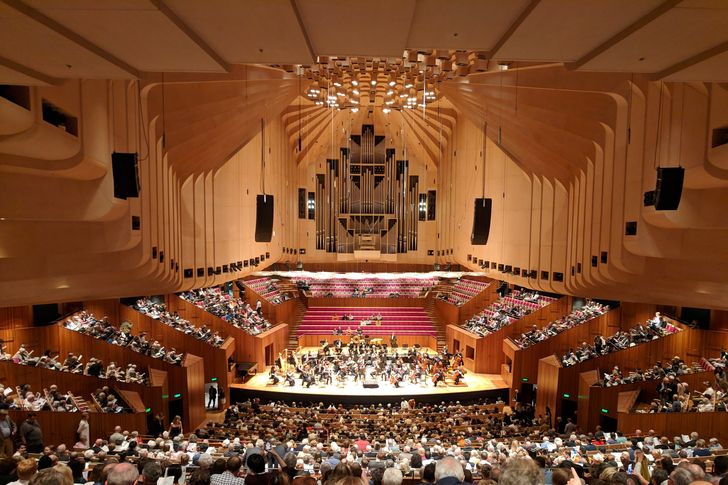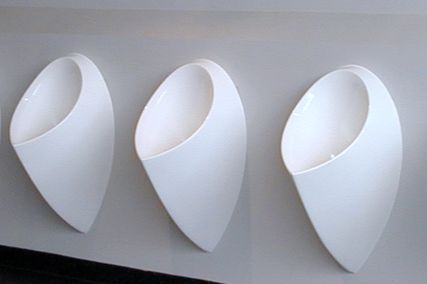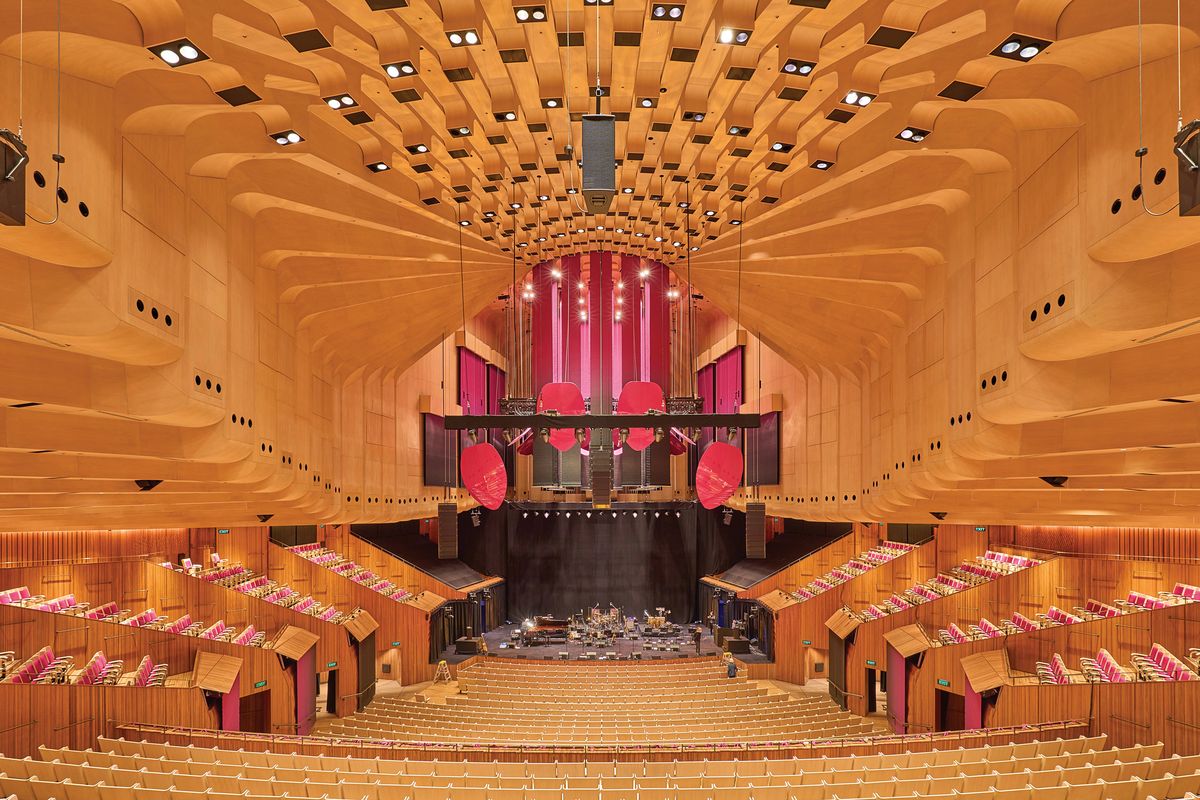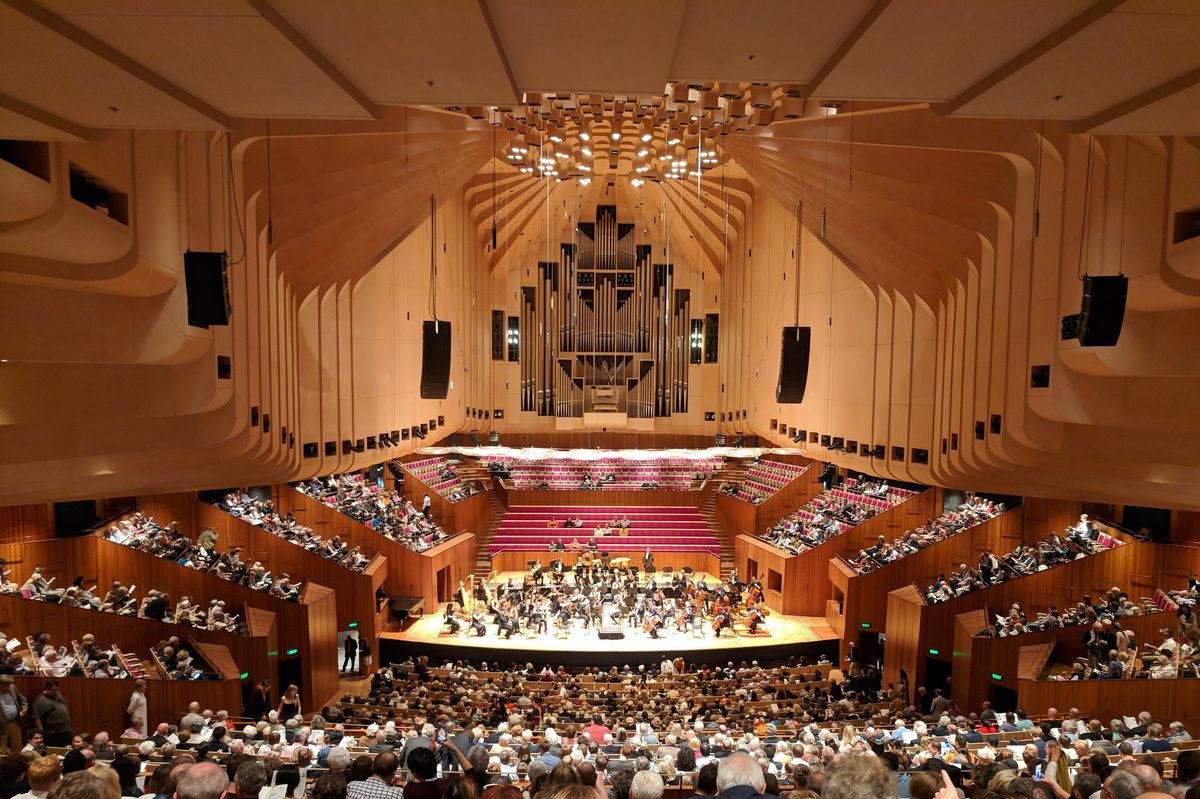Andrew Andersons was given only six pages and approximately 1,100 words in which to contextualize and review the Sydney Opera House Concert Hall Renewal in all its complexity. This may explain superficiality, but it does not excuse misrepresentation – particularly that in this passage:
“Utzon was unquestionably a genius, but was unable to achieve the impossible task of designing a single auditorium capable of first-class performances of opera, ballet and symphonic concerts. The far more pragmatic Hall succeeded in creating a concert hall that, almost 50 years after its opening, is still recognized as first-class. Considerably larger than most recent concert halls, it has become a benchmark for many others, and its plan layout has been emulated in venues such as Frank Gehry’s Walt Disney Concert Hall in Los Angeles.”
First of all, Hall too struggled to produce a successful multi-purpose auditorium. After Utzon’s departure and a subsequent review of the project, Davis Hughes, the government minister with responsibility for the completion of the opera house, eliminated ballet and grand opera.
Andersons’s claim about the influence on Walt Disney Concert Hall is also false and misrepresents the entire development of the vineyard-terrace type of concert hall, which made its appearance around the same time as Hans Scharoun’s groundbreaking Berlin Philharmonie (1956–63) with its striking tent roof. Hall’s design was inspired by Scharoun’s auditorium, but his Concert Hall suffered a number of acoustic challenges – it was too long, too narrow and too high, with its domical acoustic shell a disaster that could not be corrected. Not only does Andersons misrepresent the vineyard-terrace type’s history, he fails to mention the solution proposed by Ove Arup’s assistant, Yuzo Mikami, who had investigated multi-use prototypes. This led Mikami to invent a novel convertible hall based on extensible stage shelters on rails that enabled the volume of an auditorium to be adjusted and the reverberation time to be varied to suit voice or music. In 1984, Mikami proved the concept in the Orchard Hall in Tokyo, which could change use in 24 hours.
Hans Scharoun’s pioneering Philharmonic Hall was inspired by the delightful vineyard terraces that sculpt the slopes beside the Rhine River in Germany. Scharoun went back in time and placed music at the centre to gather audiences around the orchestra and immerse them in direct sound, thereby preventing grazing (the absorption of sound by the audience, which increases with the number of rows) and ensuring good lines of sight, which had been major failures of the traditional hall-type auditorium. Japanese acoustician Yasuhisa Toyota deserves full credit for perfecting the acoustics of the vineyard-terrace auditorium. In this sense, it was Toyota, not Peter Hall, who was responsible for the Walt Disney Concert Hall’s success, which could not be more different to the long, painful, muddled story of the Concert Hall in Sydney.
A further problem with the Concert Hall was the side reflections from the vineyard terraces, which combined and caused a loss of acoustic clarity. This issue was dealt with in the upgrade by adding small geometrically shaped blocks to avoid direct reflections spreading across the auditorium.
Andersons is entirely justified in asserting that “the acoustic transformation [is] nothing short of miraculous”. It is what he fails to mention that is even more important: that the miscalculation of the volume and introduction of a dome ceiling1 created the very problems that now have been successfully addressed, and the transformation corrected mistakes made when the original hall was built.
The original interior of Sydney Opera House Concert Hall by Peter Hall by Nick-D, licensed under Creative Commons Attribution-Share Alike 3.0 Unported
Image: Creative Commons
Andersons also does not discuss the significance of successfully correcting the problems in the reconstructed Joan Sutherland Theatre. Moving grand opera and ballet from Major Hall to the smaller Minor Hall to sidestep the Gordian knot of difficulties was destructive for the orchestra, dancers, audience and acoustics. The relocation changed everything: backstage requirements, set lift availability (which resulted in the unused lift machinery being sold as scrap), and different reverberation times among other things.
Since the Minor Hall as designed by Utzon was too small for the performance of grand opera, the offering was more limited; ballet suffered because there were no side stage skirts, so dancers ran out of room and crashed into the walls. Further, the roof vaults were completed by that time; thus, the changed program needed to be fitted into fixed volumes determined by previous uses and unsuited to the new brief. The reconstruction of the Joan Sutherland Theatre is the next element in the current Opera House reconstruction, which includes a new Centre for Creativity for children, and a new function centre.
Solving the problem of a multi-use Major Hall, and shunting the other uses to the Minor Hall, had consequences that greatly exacerbate the task of achieving a workable solution there.
The historic record of the Sydney Opera House, from the beginning to the present day, has been a zigzag course between problems, inadequate research, shallow analyses, politically uninformed action, and muddle. It has not been from a lack of good will or good intentions that Utzon’s dream ended up such a compromised mess; given that this is Australia (a country of half-measures) and not Europe, this was inevitable. One need only study Hamburg’s magnificent new Elbphilharmonie by Pierre de Meuron and Jacques Herzog to see what a difference a good supportive client can make to the architectural outcome.
1. Vern O. Knudsen and Cyril M. Harris, Acoustical Designing in Architecture (1965, New York: Wiley), p. 315


















